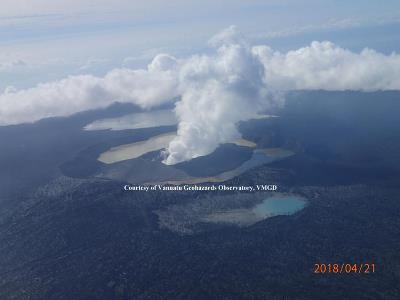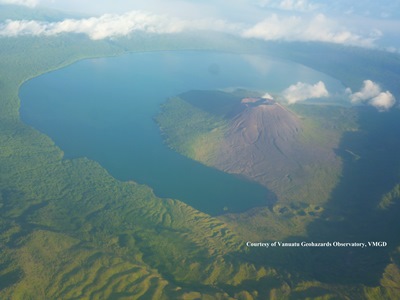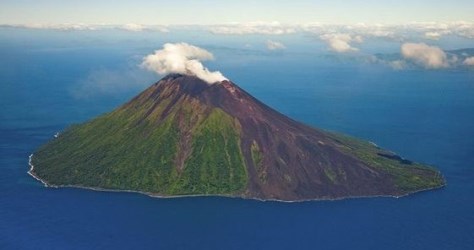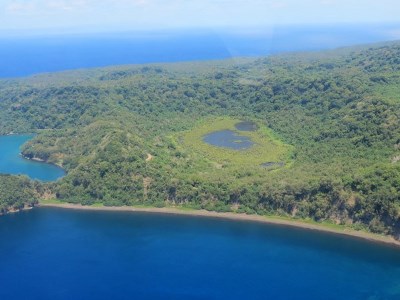![]() Types of Volcanoes & Eruptions
Types of Volcanoes & Eruptions
|
Types of volcanoes
|
|||||
|
Volcanoes can be classified by type. The style of eruption, structure and composition determine a volcano's type.
Types of eruptions
Multiples types of eruption can occur at each of Vanuatu's volcanoes - the eruption type can vary minute to minute.
The style of eruption depends on a number of factors, including the magma chemistry and content, temperature,
viscosity, volume and how much water and gas is in it, the presence of groundwater, and the plumbing of the volcano.
Vanuatu's volcanoes have different characteristics based on their style of eruption, geography, geology, structure,
composition and historical activity. Many of them have explosive activity and eject mostly ash or tephra, volcanic
gases and lava. For more information on volcanic hazards which can be produced by our volcanoes, click here.
These are least violent types of explosive eruptions. Hawaiians have fire fountains and lava flows,
whereas Strombolian eruptions have explosions causing a lava fragments.
These eruptions are small to moderate explosive eruptions, lasting seconds to minutes.
Ash column can be up to 20 km in height, and lava blocks and bombs may ejected from the vent.
Eruptions with a high rate of magma discharge, sustained for minutes to hours.
They form a tall eruption column of a mixture of gas and rocks particules, and can cause wide dispersion of ash.
An eruption driven by the heat from magma interacting with water.
The water can be groundwater, hydrothermal systems, surface runoff, a lake or the sea.
This type of eruption pulverise surrounding rocks and can produce ash, but do not include new magma.
An eruption resulting from the interaction of new magama or lava with water and can be very explosive.
The water can be from groundwater, hydrothermal systems, surface runoff, a lake or the sea.
|





